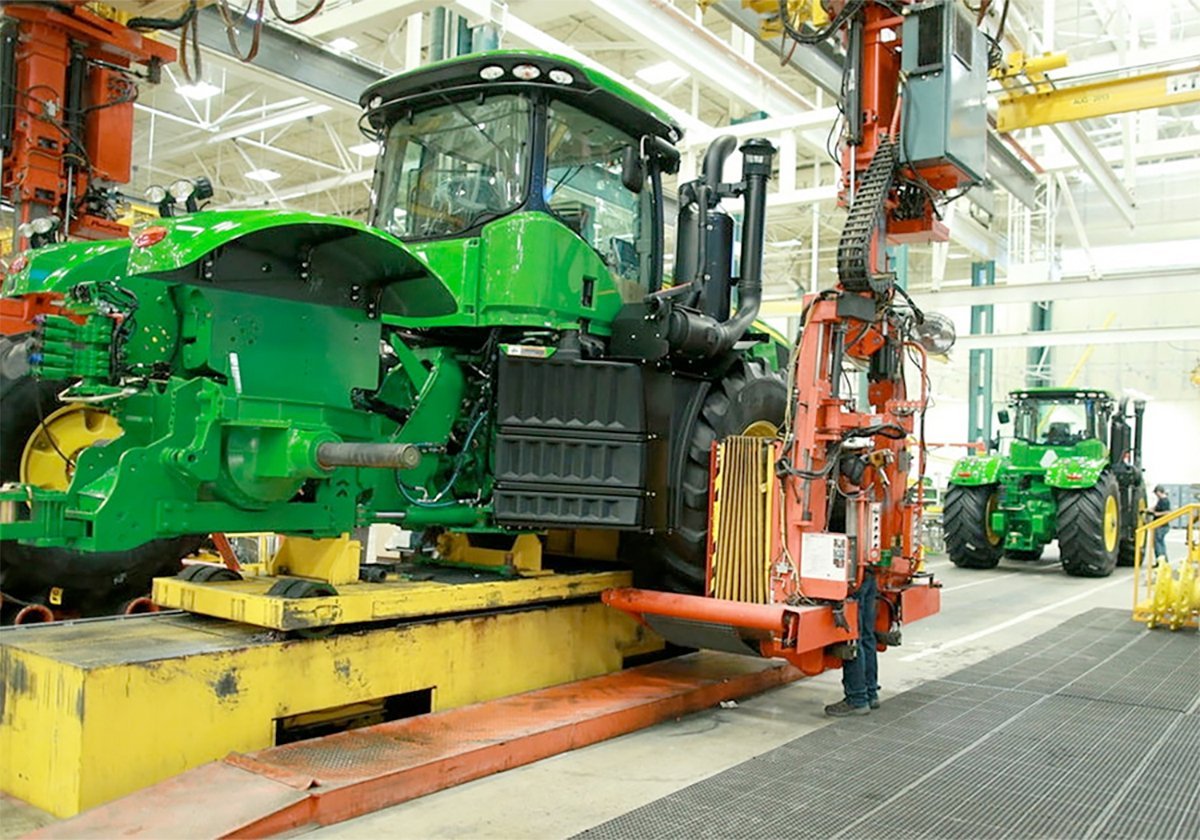Hill chairs the Canadian Wheat Board’s board of directors and farms near Swift Current, Sask.
The latest Canadian Wheat Board producer survey has sparked much interest as various interest groups struggle to assess the level of farmer support for the current marketing structure.
As usual, the questions seem simple but the results are complex, just like the western Canadian grain industry itself.
For example, there was significant evidence that producers continue to support the CWB. When asked directly, 65 percent said they supported the CWB, compared to 32 percent who opposed it.
Read Also

Trump’s trade policies take their toll on Canadian producers
U.S. trade policy as dictated by president Donald Trump is hurting Canadian farmers in a multitude of ways.
Similarly, 64 percent of farmers indicated that the views of the CWB were close to their own, the highest alignment of any organization listed.
Two-thirds of producers indicated that the CWB will maximize the value to farmers in this period of high wheat prices.
Yet when asked to indicate what their overall preference would be in terms of a marketing system, the level of support for the single desk among farmers drops to 42 percent in wheat and 27 percent in barley.
As another example, 65 percent of farmers said they believed the CWB’s monopoly allows it to get better prices than a private grain company can. And 63 percent said they believed that, in a “dual market,” the CWB would not be able to compete on a level playing field with grain companies because it owns no facilities or elevators.
Yet 67 percent also said they thought the CWB should have “no trouble” surviving in a dual market and 63 percent said it should be able to serve farmers as well as it does now.
How can this be? More importantly to me, as chair of the CWB’s board of directors, how are we to use this information? What is the big picture that emerges from these survey results?
We can safely conclude two things: farmers want more choice and they still want a role for a strong CWB.
The solution is not an open market that makes it impossible for the CWB to add value for farmers but the continuation of the single desk with more choices built in.
The current board of directors of the CWB feels strongly that the only way to meet the needs of the majority of western Canadian grain producers is to continue to build on the success of our Producer Payment Options. These programs give farmers the ability to lock in their own prices while retaining the advantages of single-desk selling.
The new CashPlus program provides a workable solution for malting barley. It enables barley producers to contract directly with maltsters.
Under CashPlus, the CWB negotiates sales with maltsters based on prevailing market conditions and then allows maltsters to source the barley from actual producers.
There is a guaranteed price that farmers are sure to receive and they have the ability to negotiate better terms with the buyer if they can.
Although maltsters, industry and government have initially expressed opposition to CashPlus, the producer survey results show that 73 percent of barley growers (even though many are not yet familiar with the program) are willing to give it a try. They say that believe that CashPlus will meet their needs.
Producer Payment Options, CashPlus and our newest delivery option are the kind of reasonable, targeted initiatives that prairie farmers say they want and need.
These programs take the complex nature of the grain industry into account.
They are also created with the knowledge that sustainable long-term solutions must be analyzed, tested and carefully implemented.
In addition, the survey results give us confidence that farmers want this issue managed by their elected representatives on our board.
In fact, 77 percent of producers indicated they wanted the CWB’s future to be determined by farmer-elected directors, not by the federal government.
One last figure from the survey that I believe is worth noting: 42 percent of grain producers have a more favourable view of the CWB today than they had two years ago. This compares to only 14 percent whose opinion is less favourable.
We see this as confirmation that we’re on the right track and that farmers realize there are no simple solutions in an industry like ours.














